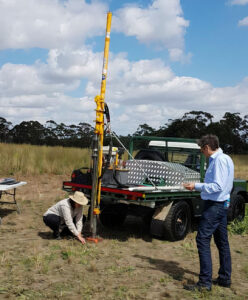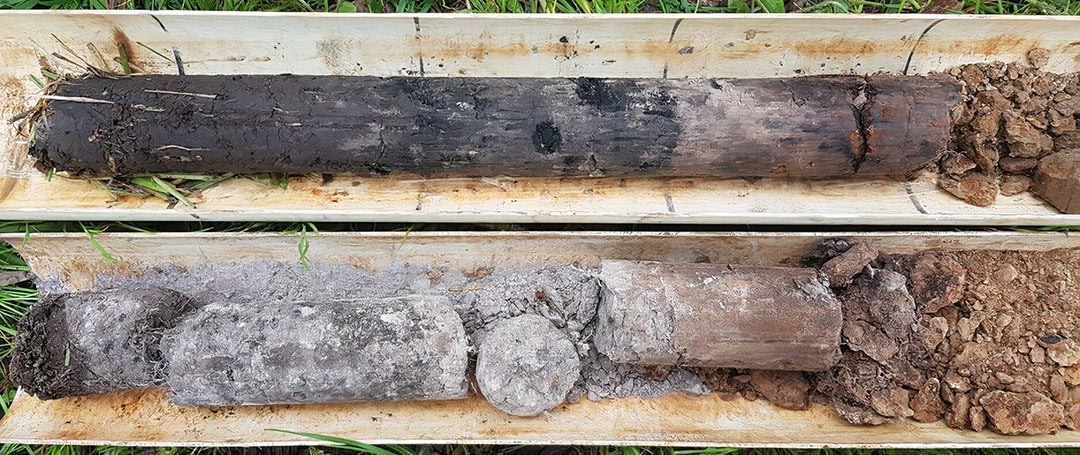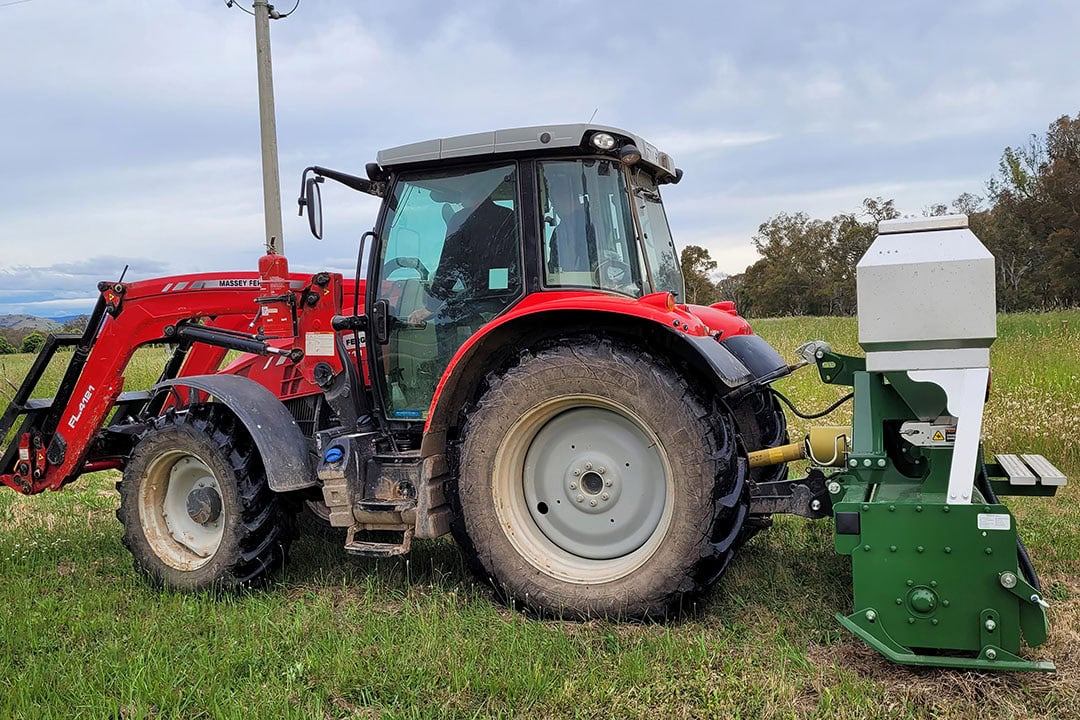The only Australian farmer to ever earn soil carbon credits

Niels Olsen is the only Australian farmer that has earned any carbon credits for his soil. He thinks that other projects in Australia might not have been successful because of the current process of random soil testing.
The Olsen family owns a cattle property in Hallora, Victoria, and was first recognised for sequestering soil carbon in 2019. A year later, the 124-hectare farm was again awarded soil carbon credits.
A seeder, that Niels Olsen invented, led the family to run a soil carbon project. The implement helps aerate soil and seed new pasture while maintaining ground cover and incorporating a green manure crop in paddocks. The machine, named Soilkee, can also be used for other crops, such as grains.
“We had some research done on our Soilkee seeder, and presented this on a carbon conference”, Mr Olsen explains. “We had a few carbon project providers approach us, because of what we were achieving in the soil. We spoke with different companies, and eventually started a soil carbon project.”
Carbon project on 100 hectares
The carbon project of the farm covered 100 hectares. Soil tests on Mr Olsen’s farm for his first project showed each hectare of the 100-hectare farm was pulling 26 tons of CO2-equivalent out of the atmosphere per hectare each year.
At today’s carbon credit spot price of about AUS $ 33 (US $ 22) per tonne, that’s more than AUS $ 850 (US $ 566) per hectare. Under a recent scheme, credits earned sequestering carbon can be also be sold to companies that cannot reduce their own emissions by 30 per cent by 2030 under binding pollution caps.
“We’ve got a lot of interest since this legislation has come through”, Mr Olsen points out. “The banks of companies, that cannot reduce their emissions, are worried that the price of the credits is going to increase from AUS $ 33 tot AUS $ 150 (US $ 100), or even AUS $ 250 (US $ 167) per ton. There has been more interest in buying credits in the past month than in the last two years.”
A fair bit of criticism

In 2020, the Olsen family was issued carbon credits for a second time. After earning 406 Australian Carbon Credit Units (ACCUs) in 2019, the family received an additional 1498 credits for a second year of soil-carbon increases.
Mr Olsen is still the only farmer to ever earn soil carbon credits. He thinks that other projects in Australia might have not earned soil carbon credits yet because of the current process of random soil testing.
Soil core technicians collect and handle samples for organic carbon. They have to do testing to a set standard. “But there has been a fair bit of criticism that it can’t be done”, Mr Olsen says. “If there is a 20-percent difference in the soil carbon just 10 metres away on a 100-hectare farm for example, the random sampling can throw a big difference.”
Loss of carbon
“A lot of the projects come up with a loss of carbon, or not much gains. A farmer has to build the carbon above the baseline, but the random sampling can show he is behind, because the baseline can be done on a high point on the farm, while the random tests could have been on a low point.”
Niels Olsen is convinced that his Soilkee implement helped him to earn the credits. To build up carbon, the Olsen family used it for planting seeds into the pasture in seven small strips over 3 metres with 17% disturbance.
“As the machine is tilling the soil, some of the soil from the trench that you are creating the seedbed with, gets dispersed in between the seedbed that you are creating. That soil might be only 2 or 3 millimetres deep. That then covers up some of the green plant matter, which will compost underneath there and feeds the microbes in the soil.”
Text continues below picture

Carbon improvement
“That naturally activates soil fungi, microbes, and earth worm populations, and will contribute to building carbon readily. It improves the efficiency of photosynthetic carbon reactions, aerates the soil, and lets the water come in. And when you have a good fungi population, you’ll hold that moisture for three weeks.”
For the first carbon project, the farm received miniscule credits, Mr Olsen says. “I am not allowed to disclose an amount, but it is much more now.” In the first year of his project, the carbon in his soil was found to have increased by 12.2 tons of carbon dioxide equivalent (tCO2e) per hectare on the 100 hectare-farm, earning Niels and his family 406 Australian Carbon Credit Units (ACCUs). In year two, soil carbon increased by 13.7 tCO2e per hectare, earning the farm around 1400 ACCUs.
Most of the carbon is increasing in the top 30 centimetres, but the testing also showed that there was carbon improvement at a depth of 30 centimetres to a metre
Mr Olsen needed to have baseline testing done first for his initial carbon project, which involved taking 18 random samples on 100 hectares. Three rounds of sampling followed after that, over a four-year period. “Each sampling round showed an increase in carbon”, Mr Olsen says. “Most of the carbon is increasing in the top 30 centimetres, but the testing also showed that there was carbon improvement at a depth of 30 centimetres to a metre. And carbon beneath 30 centimetres, is carbon that stays.”
Text continues below picture

450 soil carbon projects
In a trial over one year, done with Commercialisation Australia, the Soilkee method of Niels increased plant available nitrogen with 122%, plant available phosphorus with 34%, plant available sulphur with 51%, dry matter up to 30%, crude protein with 13% to 45%, and soil carbon with 24% from 3.7% to 4.6%.
“We didn’t apply anything”, Mr Olsen emphasises. “We made available what’s already there. Because the microbes are cycling the nutrients, there is compost aeration, and an increased fungal population. There is plenty of nitrogen in the atmosphere for all plants to grow, but we need the air in the soil for the root systems and the biology to pick the nitrogen up.”
The Olsen family is currently looking at working on a new soil project, on a property it has recently purchased. According to S&P Global Commodity Insights, of the 450 soil carbon projects registered between 2015 and 2023, only one project has been issued credits. AgriProve says it has registered over 350 projects. In Australian media AgriProve said it is in the final stages of auditing 15 carbon farming projects.
Text continues below picture



